- Home
- Jane Yolen
Troll Bridge
Troll Bridge Read online
Begin Reading
Table of Contents
About the Authors
Copyright Page
Thank you for buying this
Tom Doherty Associates ebook.
To receive special offers, bonus content,
and info on new releases and other great reads,
sign up for our newsletters.
Or visit us online at
us.macmillan.com/newslettersignup
For email updates on Jane Yolen, click here.
For email updates on Adam Stemple, click here.
The author and publisher have provided this e-book to you without Digital Rights Management software (DRM) applied so that you can enjoy reading it on your personal devices. This e-book is for your personal use only. You may not print or post this e-book, or make this e-book publicly available in any way. You may not copy, reproduce, or upload this e-book, other than to read it on one of your personal devices.
Copyright infringement is against the law. If you believe the copy of this e-book you are reading infringes on the author’s copyright, please notify the publisher at: us.macmillanusa.com/piracy.
To Heidi, because every writer needs a great reader, and to Jonathan, because every writer needs a great editor
—J. Y.
To Betsy, who, despite my being the occasional troll, has been, and always will be, my princess
—A. S.
“Prince Charming Comes” was first printed as a poem in Storyteller, a collection by Jane Yolen (NESFA Press, 1992) and recorded as a song © 1995 by The Flash Girls on Maurice and I (Fabulous Records).
From the Authors
We have relied on two famous fairy tales for this book, “The Three Billy Goats Gruff” and “The Twelve Dancing Princesses,” as well as assorted troll legends.
“The Three Billy Goats Gruff” is a Norwegian story, and the version everyone knows best was collected in 1845 by Peter Christen Asbjornsen and Jorgen Moe, though similar stories have been found in other countries and cultures. Basically a trickster tale, it shows the trolls to be large, mean, and stupid. Or at least pretty slow.
Trolls (especially as we show them here) are of Scandinavian extraction. So what better place to set them down than in the American Midwest, where many Swedes and Norwegians settled in the middle and later years of the nineteenth century. As Adam lives in Minneapolis, he is able to speak firsthand of the cultural heritage there. This includes the real Dairy Princesses, whose heads are sculpted in butter, a Minnesota tradition. However, if you have a map handy, do not waste your time looking for Vanderby. While Minneapolis, the Twin Cities, and Duluth are all real places, we made up Vanderby, its river, and the stone bridge. The name Vanderby is a cobbled-together Norwegian word meaning something like Waterbridge or Watergate.
We started with the “Three Billy Goats Gruff” and then decided to add the Dairy Princesses to the mix for some more excitement. For that bit, we have relied on the Grimm story of “The Twelve Dancing Princesses,” a story known under several other names as well, such as “The Worn Shoes” and “The Shoes That Were Danced to Pieces.” Sometimes the folk story is about one princess who wears out twelve pairs of shoes but more often, the story is of twelve girls, three nights, and an assortment of doomed princes who try to rescue them. The story probably goes back to the seventeenth century and is most often found in central Europe.
As for the Scandinavian Fossegrim (Foé-say-grim), he is considered a guardian spirit of waterfalls and an expert harper or fiddler who is also—when he feels like it—a master music teacher. It’s said he can play music to make graybeards leap up dancing from the hearthside and to bring milk to a maiden’s breast. Messy, that. But his teaching comes at a price, for he is a trickster, and his help is unreliable.
1 · Dairy Princess
And he was singing:
What’s better than a butter girl?
Badder than my better girl.
Best when I’m not buttered up as well.
What’s better than a butter girl?
Badder than my better girl.
Best that I just take them all to Hell.
—Words and music by Jakob and Erik Griffson, from Troll Bridge
Radio WMSP: 10:00 A.M.
“So, Jim, here it is, another Monday morning, and we have twelve new Dairy Princesses. But I hear this year is a bit different than other years.”
“Why yes, Katie, quite a bit different. This year we have the usual crop of star athletes and straight-A students, ready to promote the dairy industry throughout the five-state area. But there’s also Moira Darr, a genuine prodigy.”
“A prodigy, Jim? How so?”
“She’s sixteen and performs with the Minnesota Orchestra. First chair harpist. She’s international concert rank, and local composers have been lining up to write pieces for her. Her parents have said she has to finish high school before they’ll let her turn professional, though.”
“Well, good for them! And what is she like, young Moira Darr?”
“[Laughs.] Pretty, as you’d expect. Long blond hair. Startling blue eyes. But she’s also very strong-minded and outspoken.”
“Guess she’d have to be, Jim, working alongside adults as she does. Holding her own, don’t you know.”
“Yep. When I told her she looked and played like an angel, she quoted some famous musician, saying: ‘To play like an angel, you have to work like the devil.’”
“That’s good. I’ll have to remember that. But I hear there’s more than just young Ms. Darr that makes this year’s Dairy Princesses unique.”
“You can say that again. As you know, Katie, every year, the princesses get likenesses of themselves carved in butter that are displayed in the Agriculture Building at the State Fair.”
“I saw them, Jim, and a lovely presentation it was, too. Remind us what happens after the State Fair.”
“Well, normally, the butter sculptures are driven to Vanderby, a small town near Duluth, where they are left on the Trollholm Bridge.”
“Why?”
“No one knows. Or at least no one’s telling. Those folks in Vanderby … [Laughs.]”
“Now, Jim, I come from near there. [Laughs.]”
“Sorry, no offense meant.”
“None taken, Jim. But you were saying…”
“Displaying the butter heads at the State Fair has been a tradition since 1965. But residents of Vanderby say that leaving the butter heads at the bridge goes back years before that. Even back to the days when the first Scandinavian immigrants settled in Minnesota.”
“They had Dairy Princesses back then?”
“They had sculptures in butter back then, Katie. The Dairy Princesses only go back to the 1930s.”
“So the princess butter heads have been going on for, let’s see, over seventy years at least. Every year?”
“Every year till this one.”
“So this year was different?”
“Very different, Katie. Feign McGuigan, a real estate magnate from the East Coast, felt the nearly one thousand pounds of melting butter on the bridge was a danger to the sportfishing industry. He, and his eight-million-dollar campaign chest, won a seat as mayor of Vanderby, and eliminating the annual butter deposit has been his only executive action to date.”
“Out of curiosity, what was his opponent’s campaign budget?”
“Twelve hundred dollars. And he said that was stretching it.”
“Thanks, Jim. We’ll have more on that story as it develops. Now here’s Bob with sports.”
1
Moira
The regular Tuesday rehearsal had taken longer than planned because the trombone section had made a hash of their parts. It was already four thirty and Moira was furious. She banged her fist on the steering wh
eel. She was supposed to be in Vanderby by seven and in her Dairy Princess finery. Yet here she was, not even out of the Twin Cities, fighting traffic, and still in her jeans.
Trombonists are the worst! she thought. Then she spoke her anger aloud: “If I can practice a full solo to perfection while going to high school—carrying a 4.0 average, too—they should be able to get their lives together enough to learn twenty bars properly.”
Making a face at one of the drivers who was trying to edge in ahead of her, Moira cursed under her breath. She’d never say any such thing aloud. At sixteen and in an adult profession, she’d learned to use her niceness well. Outspoken—but said sweetly. That was the way to do it. However, this day wasn’t going as planned. And Moira preferred things to go the way they were written down in her schedule book.
Easing out onto Route 35W, she slipped a rehearsal tape of her solo into the tape deck, and listened critically as she drove. There was one run that still gave her a bit of trouble, though she doubted anyone—not even the conductor—had noticed. But of course she knew. And who else counts, after all?
Suddenly, she remembered she hadn’t phoned her parents, so reluctantly, she pulled over onto the grass and stopped the car. Her part of the driving-alone bargain was to stay in touch. And really, she thought, they aren’t asking much.
She turned on the phone, which she’d turned off during rehearsal. Orchestra policy insisted on it. And they were right. Nothing worse than ten different cell phones going off while the musicians were wrestling with a difficult passage. Since it was orchestra policy, her parents couldn’t complain.
She glanced at the readout. Yes—three messages, all from her mother. She’d better call before her father got the police involved. Stage parents can sometimes be the worst, she thought. Especially her parents.
Her mother picked up on the first ring. Moira started talking before her mother said hello. It was better if she didn’t let her mother get a word in.
“Just leaving the city, Mom,” she said. “Got a late start. Not my fault. You wouldn’t believe how bad the trombones were. We had to go over their stuff eight times. Eight! Really! What a mess. Maestro was not amused.” Of course no one called him Maestro except as a joke. “And they wanted to put me behind the strings. Behind! I reminded Maestro that my contract called for me to be between the winds and the strings so I can hear. Good contract. Thanks, Mom.” She could almost see her mother smiling at that.
“Call when you get to Vanderby,” her mother replied, the moment Moira took a breath.
“I will.” And she would, too, or there went her driving privileges. “Love you.”
Next she called Helena, the chief Dairy Princess, to tell her that she was just leaving the city. Helena made rude noises on the phone in return, adding she’d stall everyone when they got to Vanderby. “But get here before it’s dark. And don’t dawdle.” Dawdle was Helena’s favorite word.
“I never dawdle,” Moira said, meaning it. Then she turned off the phone. There was no time to lose if she was going to make the photo shoot.
She made a face at the thought, though: another photo op. What a waste of good practice time. She’d only tried out for Dairy Princess in the first place because her parents thought the exposure would help her career. The whole thing was supposed to take only a few days of smiling competition, interviews, crowning, a few parades. The event itself had been a bit silly, and a bit sweet. She liked the girls. Well, some of them. Especially Helena, who had a smart mouth. And Kimberleigh, who was a black belt in karate but looked as if she’d never done anything more strenuous than file her nails. The rest of them were pleasant enough, and very serious, or at least serious about being Dairy Princesses. However, not a one of them knew anything about classical music, which was a drag. Their musical tastes ranged from sugary pop to dance, with one—Chantelle—going for rap. Which, in Moira’s opinion, was as close to music as ad copy was to poetry.
But a week of being a DP was about as much as she was willing to invest, with her busy schedule. And here, six days after the last of it, the local paper suddenly wanted to do a full spread in their weekend edition about the controversy boiling up around the new Vanderby mayor, a Mr. McGuigan. Which the princesses were somehow part of, though she wasn’t sure how. Since the princesses had each signed a contract to do appearances for a full year—though no more than one a month—Moira had been stuck. Besides, the dairy people had been so accommodating, working the shoot around her schedule of rehearsals, she had nothing left to complain about except that she had to do it.
Shut up, Moira! she scolded herself, as she often did.
* * *
BY SEVEN FIFTEEN, DRIVING LEAD-FOOTED all the way, Moira was beyond Duluth and heading toward Vanderby and its Trollholm bridge. Her mother’s typed instructions had been perfect so far.
“Thanks, Mom,” she called out the window, as though her mother could hear her all the way in St. Paul.
Moira was glad she hadn’t driven with the other girls anyway. The time alone had given her a good start on listening to a tape of what would be her newest solo, a piece called “Waiting on the Princess,” written especially for her by Daniel Berlin, Minnesota’s most famous composer, world famous, in fact. He’d never written for harp before, which made the piece very difficult, and it would be a good stretch for her. She was about to play the tape again when a green sign announced the turn for Vanderby.
She pulled off the main road and onto a dirt drive her mother had marked as “Very rural.”
“That’s an understatement,” Moira said aloud, looking at the pine trees that threatened to crowd her off the road. She almost missed the smaller path that her mother had marked in large letters: “DON’T OVERSHOOT.”
It was bumpy, so she slowed down to fifteen miles an hour and when that seemed too fast, she downshifted to about eight. Then the trees opened up a bit and there, ahead of her, were several cars and a van parked near a gray stone bridge.
Moira breathed deeply. Made it!
Pulling between Helena’s blood-red Acura and the newspaper’s gray van, she stopped the car and popped the trunk where her princess dress, crown, and shoes were carefully placed. She leaped out, waving at the other girls who’d draped themselves in various positions along the bridge’s low stone walls.
The photographer was already set up and taking some early shots of individuals. Behind them the sun was just starting down behind two towering pines.
“I’m here!” Moira shouted. “I made it.”
Helena stood, putting her hands on her hips and looking every inch a royal. Her Dairy Princess crown glittered red in the sun’s rays. “For goodness sakes, girl, stop dawdling and get dressed in your gear!”
“I’ll be quick.”
The photographer turned and growled at her, “Mighty quick, honey. Before the light goes, please.” He moved onto the bridge with the girls, leaning in for close-ups. She could hear him talking rapidly to them, cozening them, getting them to smile. “Like the princesses you are,” he said. “Not cheese, caviar.”
“Caviar…” they replied dutifully, smiling prettily and opening their eyes wide, though Moira doubted any of them had ever actually tasted caviar. She had, at her first symphony gala. The stuff was fishy-tasting and awful.
Moira had just started to turn back toward her car to get into her princess clothes, when she heard an odd, rushing sound, like the timpani in Stravinsky’s “Rites of Spring,” loud, insistent, pounding. She listened more carefully. No, it sounded more like a train.
But we’re nowhere near any train, she thought, looking over her shoulder toward the sound.
And then she saw it, a wall of water rushing down the river, almost as high as the trees. It was heading right toward the bridge—toward the girls and the photographer—traveling with the mindlessness of any natural phenomenon.
Moira spun around and ran toward them. “Get off the bridge,” she screamed. “Now!” She pointed to the water galloping their way.
&n
bsp; For a moment everything seemed in motion, the girls and the photographer looking up, seeing Moira, hearing her, following her pointing finger. And then, like deer in the headlights, they stopped. None of them moved, not an arm, not a leg, not one step off the Trollholm Bridge.
The roaring water rolled over them—and they were gone.
2
Moira
For a long moment Moira couldn’t move, either. Only her heart, which was beating frantically, kept going. She stared at the wall of water, blue, white, green, the top waves tipped with red from the rays of the setting sun.
And then—she couldn’t quite figure out how—she looked right into the water in front of her, and realized with a gasp that there was a figure inside it.
Impossible! Yet there it was, in the middle of all that rushing water. A huge figure, greenish, human. Well, human-ish, anyway, but big as a house. It was wearing some sort of trousers and a kind of shirt, which hung outside the pants.
Oh God! Moira thought.
For a second Moira closed her eyes, but what she’d already seen was still imprinted on the inside of her lids: the giant man-thing turning away from her, with the eleven girls clutched in its hands and the photographer … the photographer was in the creature’s mouth, held there between enormous protruding teeth.
“Let them go!” Moira screamed at it. But her cry was obscured by the rush of water and by the screams of the other girls.
It was Moira’s own scream that gave her momentum. Her body knew before her brain that she had to save them. If she’d actually given it any thought, she’d never have tried. But she raced to the bridge, leapt one-footed onto the low wall, and then launched herself at the creature’s back. She caught the end of its shirttails and hung on.
“You … You…” She couldn’t think of a curse strong enough. “You monster.”

 The Pictish Child
The Pictish Child Cards of Grief
Cards of Grief A Plague of Unicorns
A Plague of Unicorns Heart's Blood
Heart's Blood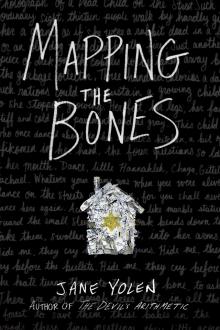 Mapping the Bones
Mapping the Bones Snow in Summer
Snow in Summer Merlin's Booke: Stories of the Great Wizard
Merlin's Booke: Stories of the Great Wizard Centaur Rising
Centaur Rising The One-Armed Queen
The One-Armed Queen Dragon's Blood
Dragon's Blood Boots and the Seven Leaguers
Boots and the Seven Leaguers The Girl Who Cried Flowers and Other Tales
The Girl Who Cried Flowers and Other Tales The Wizard of Washington Square
The Wizard of Washington Square Tales of Wonder
Tales of Wonder The Emerald Circus
The Emerald Circus Sister Light, Sister Dark
Sister Light, Sister Dark Twelve Impossible Things Before Breakfast
Twelve Impossible Things Before Breakfast The Devil's Arithmetic
The Devil's Arithmetic Trash Mountain
Trash Mountain The Dragon's Boy
The Dragon's Boy A Sending of Dragons
A Sending of Dragons The Young Merlin Trilogy
The Young Merlin Trilogy The Last Tsar's Dragons
The Last Tsar's Dragons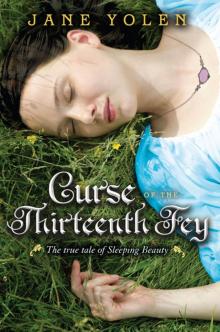 Curse of the Thirteenth Fey: The True Tale of Sleeping Beauty
Curse of the Thirteenth Fey: The True Tale of Sleeping Beauty The Bagpiper's Ghost
The Bagpiper's Ghost Nebula Awards Showcase 2018
Nebula Awards Showcase 2018 Hobby
Hobby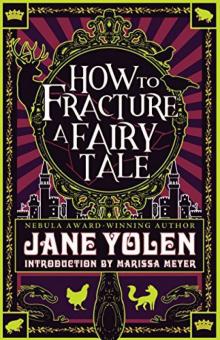 How to Fracture a Fairy Tale: 2
How to Fracture a Fairy Tale: 2 Children of a Different Sky
Children of a Different Sky Commander Toad and the Intergalactic Spy
Commander Toad and the Intergalactic Spy Wizard’s Hall
Wizard’s Hall The Transfigured Hart
The Transfigured Hart Dragonfield: And Other Stories
Dragonfield: And Other Stories The Magic Three of Solatia
The Magic Three of Solatia The Great Alta Saga Omnibus
The Great Alta Saga Omnibus Favorite Folktales From Around the World
Favorite Folktales From Around the World Passager
Passager The Wizard's Map
The Wizard's Map The Last Changeling
The Last Changeling Except the Queen
Except the Queen Snow in Summer: Fairest of Them All: Fairest of Them All
Snow in Summer: Fairest of Them All: Fairest of Them All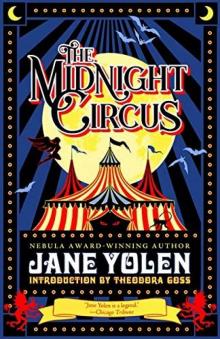 The Midnight Circus
The Midnight Circus Atalanta and the Arcadian Beast
Atalanta and the Arcadian Beast Finding Baba Yaga
Finding Baba Yaga The Rogues
The Rogues Dragon's Boy
Dragon's Boy The Hostage Prince
The Hostage Prince Wizard of Washington Square
Wizard of Washington Square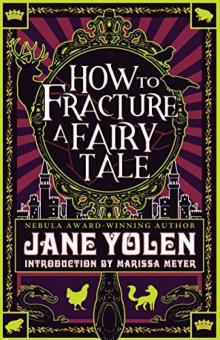 How to Fracture a Fairy Tale
How to Fracture a Fairy Tale Magic Three of Solatia
Magic Three of Solatia Curse of the Thirteenth Fey
Curse of the Thirteenth Fey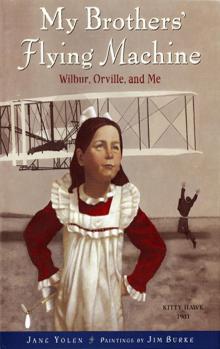 My Brothers' Flying Machine
My Brothers' Flying Machine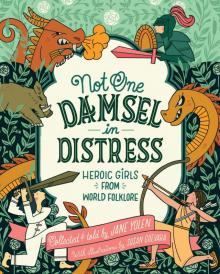 Not One Damsel in Distress
Not One Damsel in Distress Merlin's Booke
Merlin's Booke Pay the Piper: A Rock 'n' Roll Fairy Tale
Pay the Piper: A Rock 'n' Roll Fairy Tale Merlin
Merlin Troll Bridge
Troll Bridge Pay the Piper
Pay the Piper Dragonfield
Dragonfield Sister Emily's Lightship
Sister Emily's Lightship Hippolyta and the Curse of the Amazons
Hippolyta and the Curse of the Amazons Prince Across the Water
Prince Across the Water Dragon's Heart
Dragon's Heart The Seelie King's War
The Seelie King's War Among Angels
Among Angels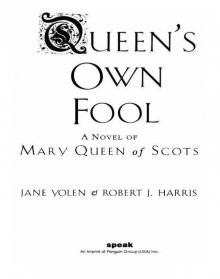 Queen's Own Fool
Queen's Own Fool